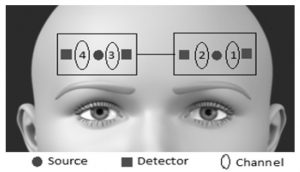Improve Attention with Short-Term Loving Kindness Meditation
By John M. de Castro, Ph.D.
“meditation practice is associated with enduring improvements in sustained attention,” – Anthony Zanesco
There has accumulated a large amount of research demonstrating that mindfulness has significant benefits for psychological, physiological, and spiritual wellbeing. It even improves high level thinking known as executive function and emotion regulation and compassion. One of the primary effects of mindfulness training is an improvement in the ability to pay attention to the task at hand and ignore interfering stimuli. This is an important consequence of mindfulness training and produces improvements in thinking, reasoning, and creativity. The importance of heightened attentional ability to the individual’s ability to navigate the demands of complex modern life cannot be overstated. It helps in school, at work, in relationships, or simply driving a car.
One understudied meditation technique is Loving Kindness Meditation. It is designed to develop kindness and compassion to oneself and others. The individual systematically pictures different individuals from self, to close friends, to enemies and wishes them happiness, well-being, safety, peace, and ease of well-being. Although Loving Kindness Meditation has been practiced for centuries, it has received very little scientific research attention. As important as attention is, it’s surprising that little is known about the short-term effects of Loving Kindness Meditation on attention.
In today’s Research News article “Short-Term Effects of Meditation on Sustained Attention as Measured by fNIRS.” (See summary below or view the full text of the study at: https://www.ncbi.nlm.nih.gov/pmc/articles/PMC7564228/ ) Izzetoglu and colleagues recruited healthy non-meditating college students. During the one session study the participants had their blood pressure and heart rate monitored and functional near infrared spectroscopy (fNIRS) sensors placed on their foreheads. “fNIRS is an optics-based brain imaging modality which can measure relative changes in oxygenated (HbO2) and deoxygenated (Hb) hemoglobin using light in the near infrared range (650–950 nm)”. It is thought to measure blood flow from the prefrontal cortex which is involved in high level thinking.
The participants were then measured for sustained attention by performing in order the Stroop Color task, the Stroop word task, and then the Stroop Color Word task. These measurements were followed by a guided 22-minute Loving Kindness Meditation practice. After meditation the three sustained attention (Stroop) tasks were repeated. In the color Stroop test names of colors were presented in colors different from the word, e.g. the word RED appears in a blue color. The participants are asked to report the word (naming) or the color of the word ignoring the meaning of the word itself (inhibition) or switch back and forth (Executive function).
They found that in comparison to per-meditation, after Loving Kindness Meditation practice there was a significant increase in the speed of responding on the Stroop tasks and reduction in pulse pressure and systolic blood pressure. The fNIRS measure during the Stroop task suggested that after meditation there was a significant increase in blood flow to the dorsal lateral prefrontal cortex and area thought to be involved in attentional focus.
The study was very short term and there was no control comparison group. So, the results must be interpreted carefully. Nevertheless, they suggest that the immediate effects of Loving Kindness Meditation practice is to improve attentional focus reflected in behavioral performance, physiological relaxation, and brain activity. These short term effects of meditation are compatible with the observed long term effects of Loving Kindness Meditation. This suggests that the long-term effects of the meditation on the physiology and behavior occur due to an accumulation of short-term impacts.
So, improve attention with short-term Loving Kindness Meditation.
“meditation training helps people do better at focusing for a long time on a task that requires them to distinguish small differences between things they see.” – Science Daily
CMCS – Center for Mindfulness and Contemplative Studies
This and other Contemplative Studies posts are also available on Google+ https://plus.google.com/106784388191201299496/posts and on Twitter @MindfulResearch
Study Summary
Izzetoglu, M., Shewokis, P. A., Tsai, K., Dantoin, P., Sparango, K., & Min, K. (2020). Short-Term Effects of Meditation on Sustained Attention as Measured by fNIRS. Brain sciences, 10(9), 608. https://doi.org/10.3390/brainsci10090608
Abstract
Cognitive abilities such as attention, memory, processing time, perception, and reasoning can be augmented using some type of intervention. Within the broad range of conventional and unconventional intervention methods used in cognitive enhancement, meditation is one of those that is safe, widely practiced by many since ancient times, and has been shown to reduce stress and improve psychological health and cognitive functioning. Various neuroimaging studies using functional magnetic resonance imaging (fMRI) and electroencephalography (EEG) have shown functional and structural changes due to meditation in different types of meditation practices and on various groups of meditators. Recently, a few studies on meditation have used functional near infrared spectroscopy (fNIRS) to study the effects of meditation on cerebral hemodynamics. In this study, we examined the short-term effects of loving-kindness (LK) meditation on sustained attention using behavioral performance measures, physiological outcomes, and cognitive activity as measured by fNIRS in first-time meditators during Stroop color word task (SCWT) performance. Our results indicated that behavioral outcomes, assessed mainly on response time (RT) during SCWT performance, showed a significant decrease after meditation. As expected, physiological measures, primarily pulse pressure (PP) measured after meditation dropped significantly as compared to the before meditation measurement. For the hemodynamic measures of oxygenated-hemoglobin (HbO2), deoxygenated-hemoglobin (Hb), and total-hemoglobin (HbT), our findings show significant differences in SCWT performance before and after meditation. Our results suggest that LK meditation can result in improvements in cognitive, physiological, and behavioral outcomes of first-time meditators after a short-term session.
https://www.ncbi.nlm.nih.gov/pmc/articles/PMC7564228/
